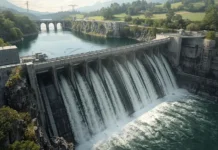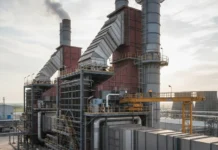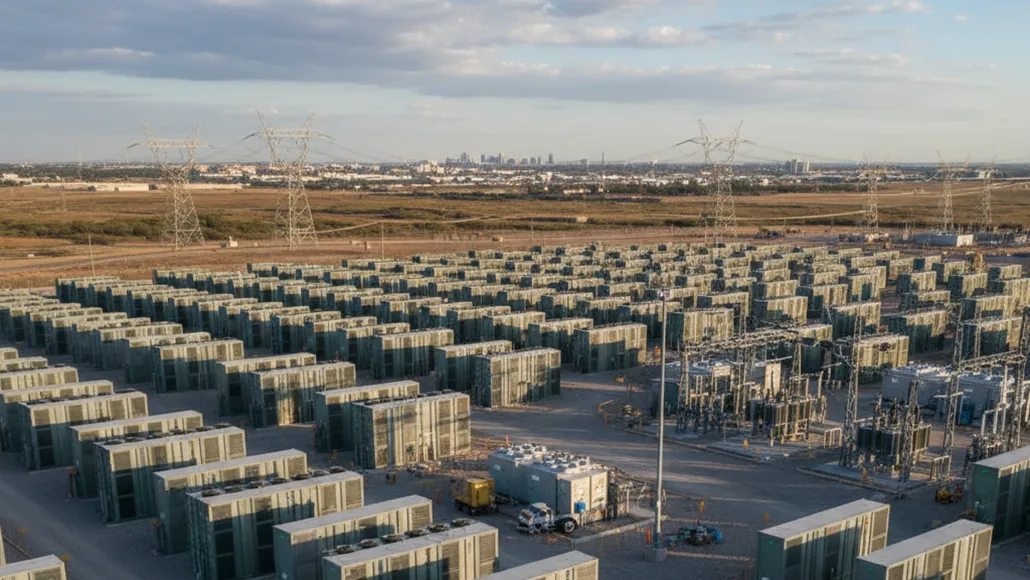Grid-Scale Energy Storage and Its Impact on Peak Demand and Grid Stability
The modern electricity landscape faces unprecedented challenges as renewable energy integration accelerates and electricity consumption patterns evolve, making grid scale energy storage for peak demand and stability one of the most critical technologies for reliable power system operations. These massive storage systems serve as the backbone for grid modernization, enabling utilities to balance variable renewable generation with fluctuating electricity demand while maintaining the stringent reliability standards essential for modern society.
Grid stability increasingly depends on sophisticated energy storage technologies that can respond within milliseconds to frequency deviations, voltage fluctuations, and supply-demand imbalances. As traditional fossil fuel power plants that historically provided grid stability services are retired in favor of renewable energy sources, energy storage systems must fill the critical gap by providing essential grid services while enabling higher levels of renewable energy penetration.
The transformation from a power system dominated by dispatchable fossil fuel generation to one increasingly reliant on variable renewable sources creates fundamental challenges that large scale storage solutions are uniquely positioned to address. These systems enable utilities to capture excess renewable energy during periods of high generation and release it during peak demand periods, effectively decoupling energy production timing from consumption requirements.
The Economics of Peak Demand Management
Peak electricity demand represents one of the most expensive aspects of power system operations, requiring utilities to maintain costly peaking power plants that operate only during periods of highest electricity consumption. These peaking units typically utilize natural gas combustion turbines that can start quickly but operate at relatively low efficiency and high fuel costs.
Peak demand reduction through energy storage offers substantial economic benefits by enabling utilities to avoid construction of new peaking power plants while reducing reliance on expensive peaker operations during high-demand periods. Grid-scale storage systems can charge during off-peak periods when electricity prices are low and discharge during peak periods when prices are high, providing energy arbitrage opportunities that benefit both utilities and consumers.
The daily electricity demand curve in most regions shows predictable patterns with peak consumption occurring during early evening hours when residential air conditioning, lighting, and appliance usage coincides with continued commercial and industrial demand. Battery storage systems can flatten these demand peaks by providing stored energy precisely when grid demand is highest.
Solar energy generation patterns create particular challenges for peak demand management, as solar output peaks around midday but approaches zero during evening peak demand periods. This timing mismatch, often called the “duck curve,” requires grid operators to rapidly increase conventional generation as solar output decreases and electricity demand reaches daily peaks.
Battery Energy Storage System Technologies
Lithium-ion battery storage currently dominates the grid-scale energy storage market due to declining costs, improving performance characteristics, and proven reliability in utility applications. These systems offer high round-trip efficiency, typically exceeding 90%, and can respond to grid signals within seconds to provide frequency regulation and voltage support services.
The cost trajectory for lithium-ion batteries has been remarkable, with prices declining approximately 20% for each doubling of worldwide manufacturing capacity. This cost reduction trend makes grid-scale battery storage increasingly competitive with traditional grid infrastructure investments while providing multiple value streams beyond simple energy arbitrage.
Flow batteries represent an emerging technology particularly well-suited for long-duration energy storage applications. These systems store energy in liquid electrolytes contained in external tanks, enabling independent scaling of power and energy capacity. Flow batteries can provide 8-12 hours or more of energy discharge, compared to the 1-4 hours typical of lithium-ion installations.
Compressed air energy storage utilizes underground caverns or above-ground pressure vessels to store energy in the form of compressed air. During discharge periods, the compressed air drives turbines to generate electricity. These systems can provide long-duration storage capabilities while utilizing relatively low-cost materials and established industrial technologies.
Grid Stability Services and Ancillary Markets
Energy storage systems provide essential grid services that maintain power system stability and reliability far beyond simple energy shifting applications. These ancillary services include frequency regulation, spinning reserves, voltage support, and black start capabilities that become increasingly valuable as renewable energy penetration increases.
Frequency regulation represents one of the most valuable services provided by grid-scale storage systems. Power system frequency must remain within narrow tolerances to prevent equipment damage and maintain grid stability. Energy storage systems can rapidly adjust their charging or discharging rates to counteract frequency deviations caused by supply-demand imbalances.
Spinning reserves provide backup power capacity that can be deployed within minutes to replace unexpected generation outages or accommodate sudden load increases. Traditional spinning reserves require fossil fuel generators to operate at reduced output, wasting fuel and increasing emissions. Energy storage systems can provide spinning reserves without ongoing fuel consumption or emissions.
Voltage support services help maintain proper voltage levels throughout transmission and distribution systems. Energy storage systems can provide reactive power support and voltage regulation services that help utilities maintain power quality and prevent voltage-related outages.
Black start capabilities enable power system restoration following major blackouts. Energy storage systems can provide the initial power needed to restart conventional power plants and begin the complex process of grid restoration without relying on external power sources.
Renewable Energy Integration and Variability Management
The integration of variable renewable energy sources creates significant challenges for grid operators who must continuously balance electricity supply and demand. Wind and solar generation can fluctuate rapidly due to weather conditions, creating ramp rates that exceed the response capabilities of conventional power plants.
Grid scale energy storage systems enable higher levels of renewable energy penetration by providing the flexibility needed to accommodate generation variability. These systems can absorb excess renewable energy during periods of high generation and provide dispatchable power when renewable output is low.
Renewable energy curtailment occurs when wind or solar generation exceeds instantaneous electricity demand and grid constraints prevent the excess energy from being transmitted to areas where it could be utilized. Energy storage systems can capture this otherwise wasted renewable energy and release it when needed, improving overall renewable energy utilization and reducing curtailment losses.
Time-shifting capabilities enable renewable energy to provide firm power capacity that can be dispatched when needed regardless of current weather conditions. This capability transforms variable renewable resources into dispatchable generation that can compete with conventional power plants for capacity market revenues.
Grid Infrastructure and Transmission Benefits
Grid-scale energy storage installations can defer or eliminate the need for expensive transmission and distribution infrastructure upgrades by managing local power flows and reducing peak loading on existing infrastructure. These applications are particularly valuable in areas where load growth would otherwise require costly transmission system expansions.
Transmission congestion occurs when power flows exceed the capacity of transmission lines, forcing grid operators to dispatch more expensive local generation instead of lower-cost resources located in different regions. Strategically located energy storage systems can relieve transmission congestion by storing energy during off-peak periods and providing local generation during peak demand.
Distribution system benefits include voltage regulation, power quality improvement, and deferral of distribution infrastructure upgrades. Energy storage systems located within distribution networks can provide localized grid services while reducing losses associated with long-distance power transmission.
Grid resilience improvements result from distributed energy storage systems that can provide backup power during outages and support faster grid restoration following major disturbances. These systems enhance overall grid reliability while providing economic benefits during normal operations.
Long-Duration Storage Technologies and Applications
Current battery storage systems typically provide 1-4 hours of energy storage capacity, which adequately addresses short-term grid balancing requirements but may not provide sufficient duration for seasonal energy storage or extended renewable energy droughts. Future grid operations may require 8-12 hours or more of energy storage duration to fully support renewable energy integration.
Pumped hydroelectric storage represents the most mature long-duration storage technology, utilizing excess electricity to pump water uphill during off-peak periods and releasing it through turbines during peak demand. These systems can provide many hours of energy storage but require specific geographical conditions including suitable elevation differences and water resources.
Thermal energy storage systems store energy in the form of heat or cold that can be converted back to electricity when needed. These systems can utilize molten salt, phase change materials, or other thermal storage media to provide long-duration energy storage capabilities at potentially lower costs than electrochemical batteries.
Hydrogen production through electrolysis offers potential for very long-duration energy storage by converting excess renewable electricity into hydrogen fuel that can be stored for weeks or months and converted back to electricity using fuel cells or hydrogen turbines when needed.
Market Mechanisms and Revenue Optimization
Energy storage systems can participate in multiple electricity markets simultaneously, creating diverse revenue streams that improve project economics and provide various grid benefits. Energy markets compensate storage systems for providing energy during peak demand periods, while ancillary service markets pay for frequency regulation, reserves, and other grid stability services.
Capacity markets provide payments to resources that commit to being available during periods of peak demand, recognizing the reliability value of dispatchable resources. Energy storage systems can participate in capacity markets by guaranteeing availability during critical peak demand periods.
Demand charge management enables commercial and industrial customers to reduce their electricity costs by using energy storage to reduce peak demand charges. These applications can provide attractive economics for behind-the-meter storage systems while supporting overall grid efficiency.
Renewable energy firming contracts enable storage systems to provide guaranteed power delivery from variable renewable resources. These contracts can improve the economic value of renewable energy projects while providing utilities with firm capacity resources.
Regional Grid Applications and Case Studies
Different regions face unique challenges that influence optimal energy storage applications and configurations. California’s high solar penetration creates specific requirements for energy storage systems that can address the duck curve challenge by storing midday solar energy for evening peak demand periods.
Texas grid operations require substantial reserve capacity to address the state’s high electricity demand and variable renewable generation. Large-scale energy storage systems provide essential grid services while enabling higher levels of wind energy utilization during periods of low demand.
Northeastern United States markets face challenges related to winter peak demand and limited pipeline capacity for natural gas delivery to power plants. Energy storage systems can provide critical backup power during extreme weather events while reducing reliance on expensive oil-fired peaking units.
European grid integration requires energy storage systems that can support international power trading and accommodate varying renewable energy policies across different countries. These applications demonstrate the value of storage for managing cross-border power flows and supporting regional grid stability.
Environmental Benefits and Carbon Reduction
Renewable integration enabled by energy storage systems provides substantial environmental benefits by reducing reliance on fossil fuel generation and enabling higher utilization of clean energy resources. Storage systems can reduce carbon emissions by displacing peaking power plants that typically operate at low efficiency and high emission rates.
Energy efficiency improvements result from reduced transmission losses and more efficient utilization of existing power generation resources. Storage systems can reduce the need for inefficient peaking plants while improving overall power system efficiency.
Air quality benefits occur in urban areas where energy storage can reduce local emissions from peaking power plants that typically operate during periods of high electricity demand when air quality concerns are most severe.
Future Technology Developments and Grid Evolution
The continued evolution of large scale storage solutions will likely include improvements in energy density, cycle life, and cost performance that expand the economic applications for grid-scale energy storage. Advanced battery chemistries, novel storage technologies, and manufacturing scale improvements will drive continued cost reductions and performance enhancements.
Grid integration standards and market designs continue evolving to better recognize and compensate the multiple values provided by energy storage systems. These developments will likely improve project economics while enabling more efficient utilization of storage resources.
Artificial intelligence and machine learning applications will enhance energy storage optimization by improving forecasting accuracy, optimizing charging and discharging strategies, and coordinating multiple storage systems for maximum grid benefit.
System integration advances will enable better coordination between energy storage, renewable generation, and grid operations to maximize overall system efficiency and reliability while minimizing costs and environmental impacts.
Grid scale energy storage for peak demand and stability represents a fundamental enabling technology for the modern electricity grid, providing essential services that maintain reliability while enabling higher levels of renewable energy integration. As storage costs continue declining and technology performance improves, these systems will become increasingly essential for efficient, reliable, and sustainable power system operations. The combination of peak demand management, grid stability services, and renewable energy integration creates multiple value streams that position energy storage as a cornerstone technology for the electricity sector’s future evolution toward cleaner, more flexible, and more resilient operations.
Key Takeaways:
- Grid-scale storage systems can reduce peak demand infrastructure requirements and operational costs
- Battery storage provides essential grid services including frequency regulation and voltage support
- Energy storage enables higher renewable energy penetration by managing generation variability
- Multiple revenue streams from energy, capacity, and ancillary service markets improve project economics
- Long-duration storage technologies will become essential for seasonal renewable energy management





































